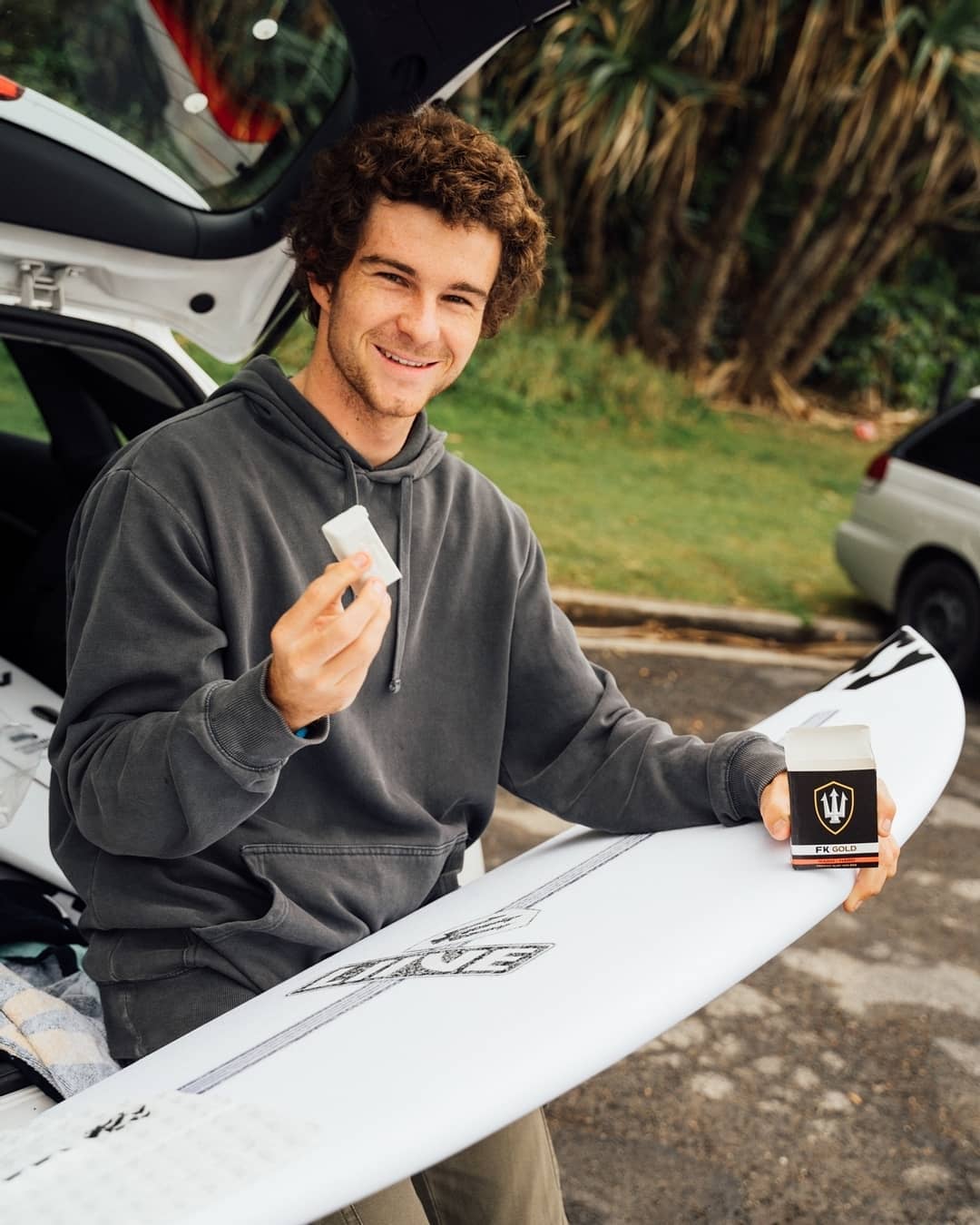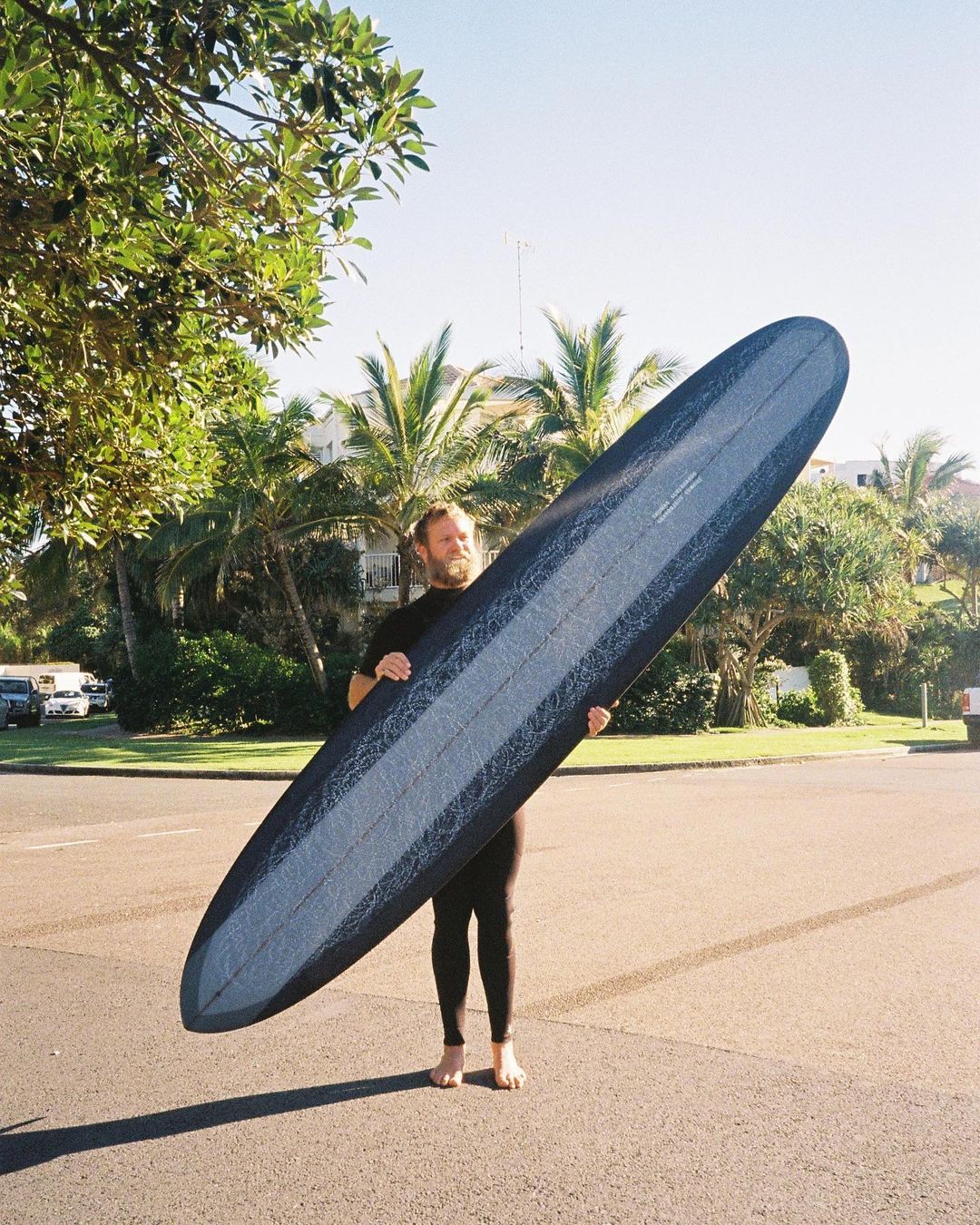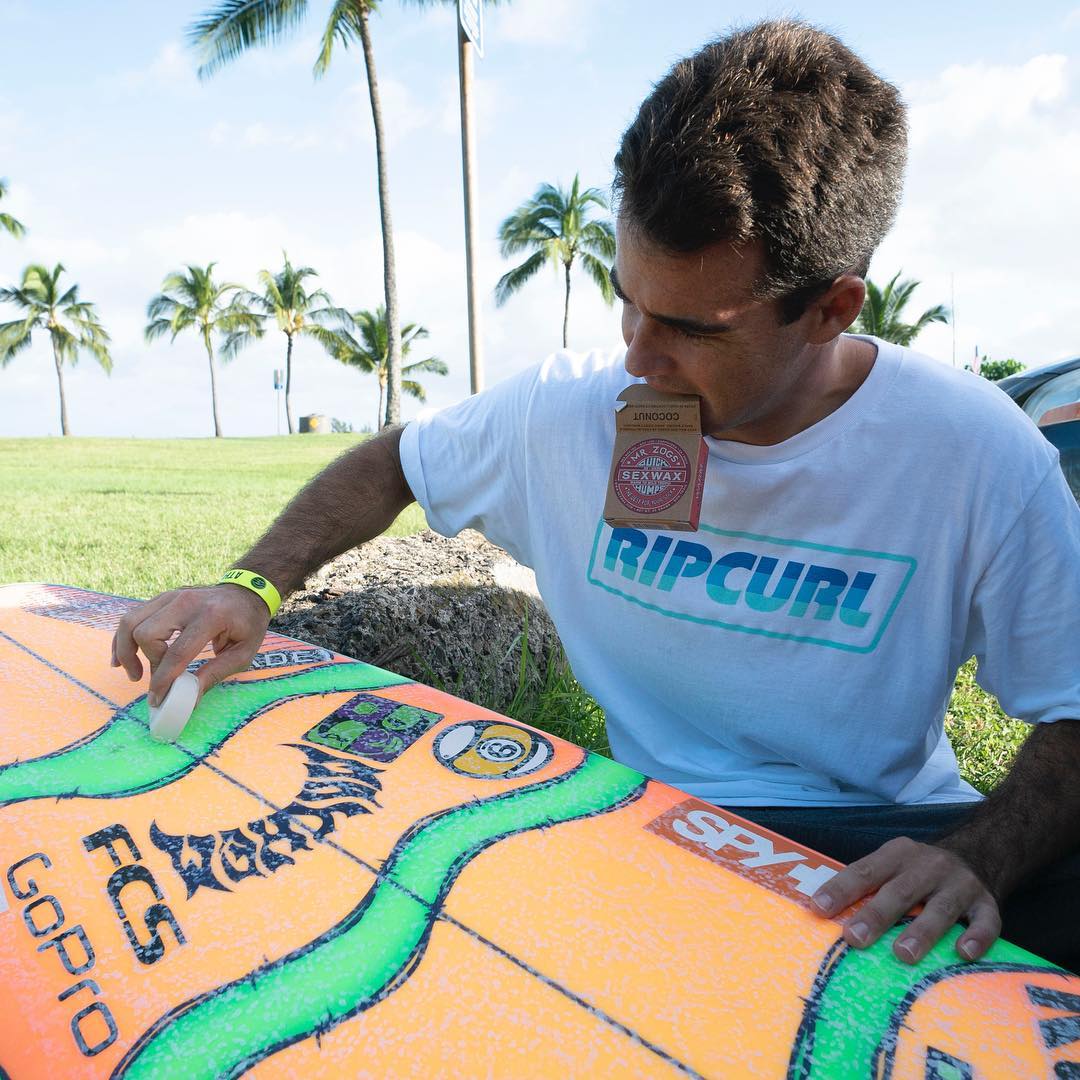The Ultimate Guide to Waxing Your Surfboard
Wax like a pro, surf like a pro….
Besides learning how to keep yourself glued to your surfboard, another important skill to learn for any serious surfer is how to wax a surfboard. It might not be as glamorous as riding a big wave, but it can help you avoid that all too embarrassing wipeout.
What is surfboard wax?
Surfboard wax provides grip and traction, helping surfers keep their feet firmly planted on the board. It stops surfers from losing balance as they paddle out to the waves and keeps them connected to their boards while performing complicated manoeuvres.
Surfboard wax also acts as an additional coating for surfboards, protecting them against the elements. Aside from providing traction, surfing wax also allows you to slice better through the waters, making it a must-have in any serious surfing kit.

Types of Surfboard Wax
Selecting the best surfboard wax gives you the right balance of traction and grip, which will maximise your surfing performance. It can also boost your confidence, making it easier for you to try new moves without worrying about slipping from the surfboard.
Basecoat
Basecoat wax is used as an undercoat or prep material before standard surfboard wax is applied. It makes it easier to apply regular wax while allowing it to stick better on the board. Unlike other wax materials, the base coat remains stable despite temperature changes.
The purpose of the basecoat is to hold the topcoat down. When applied, it forms small bumps of wax across the board’s riding surface. These bumps help the surfer maintain balance as they hit the waves.
Basecoats maintain their integrity better and last longer. It is mostly composed of hardened wax that can be used in warm or tropical climates. However, the application can be tricky. You must apply the right amount of pressure to help it evenly settle across the board.
Topcoat
A topcoat is a layer of wax applied directly above the foundation or basecoat. Application is usually made by applying it in a circular motion using gentle pressure. After applying the topcoat, the small bumps formed by the undercoat become noticeable. One important thing to remember is that more is not better. Using too much wax can actually make it more difficult to surf.
Traditional
These waxes are the most popular form of surfboard waxes because they apply both basecoats and topcoats. However, it may take a few more minutes before the board is actually sticky enough to provide the right amount of traction needed for your surfing trips.
Sticky
If you’re having problems maintaining traction with your current wax, then changing your wax can help get it more sticky for extra traction. We recommend testing the water temperature of wax you're using. For example, if it's a warm tropical climate and you wax keeps melting, this will effect your traction on the board and you may need wax that is better suited to warmer water and doesn't melt as easy. This will ensure you get the perfect sticky traction under your feet but not too sticky that the wax is easily removed. In some cases, you can use a more solid base coat of harder wax and then apply the top coat that meets your needs for sticky traction. We recommend keeping a selection of cold and warm water wax to ensure you are prepared and have the right wax for a sticky finish. Try avoid applying too much wax, you can always remove the wax for a fresh coat and to get the perfect ratio sticky traction for the water temperature and conditions.
The Role Temperature Plays
‘Soft wax for cold water and hard wax for warm water’
Cold: Below 15°C / 60°F
Cold-water waxes are designed to maintain a maximum grip on the board despite the low temperatures. It is important to remember that these should not be stored in higher temperatures or warm, tropical climates since they break down under the heat.
Cool: 14°C - 19°C / 58°F - 68°F
Like cold-water waxes, cool-water waxes are designed to keep the board's grip in cooler temperatures, and they should not be used as the temperature begins to rise.
Warm: 19°C - 28°C / 64°F - 74°F
Warm-water waxes are not resistant to hot temperatures. To be effective, refer to the manufacturer’s application guideline to get maximum board traction.
Tropical: Above 24°C / 75°F
Tropical wax is created for hotter temperatures. These waxes do not melt easily when exposed to higher temperatures or placed under direct sunlight.
Where to Put the Wax
To get an idea of where you should place the wax on your board, one important thing to consider is the type of surfboard you would be using. Longboards, for example, require that wax be applied over its entire deck (tail to nose). This is because longboard surfers usually walk the deck.
Surfers planning to use a shortboard or fun board can skip waxing the nose area. Concentrate on waxing three-fourths of the board starting from the tail area or where the surfer generally places their feet. The surfer must also give themselves at least 25-30 centimetres more wax from their front foot to the board's nose to move their feet around.
Another location where you should place wax is close to the rails, where surfers usually grab their board as they popup and perform tricks. Giving special attention and extra wax in this area gives better board grip.
 Wax all the way to the nose
Wax all the way to the nose
How to Wax a Surfboard
Step1. Gather the Essentials
Remember that surf wax is not a one-size-fits-all product. You should spend some time familiarising yourself with the different types of wax and what works best for specific boards and conditions. Water temperature is the most critical factor when selecting what surfboard wax to use. Essential musts when surfing the board include your basecoat wax, topcoat wax, and wax comb.
Step2. Clean the Board
Before reapplying wax on the surfboard, ensure that the surfboard is clean. Do a thorough run over your surfboard using your fingers and check for any wax residues. Any old wax on the board can cause damage to the wax job that will be done later on and make the new wax flake off earlier.
When using a wax comb to scrape off the old wax, use the thinner side and make straight up and down motions to gently remove the wax. Using the wax comb's curved side, remove any old wax from the rails. To ensure that all old wax is removed, you can use pure coconut water or rub off the wax using beach sand. An all-in-one tool like the Premium Wax Tool by Creatures is a great low cost option.
Step3. Apply the Basecoat
How you apply the basecoat will determine the quality of your work. The topcoat naturally gets worn out or easily rubbed off, but the basecoat remains until it is time to apply new wax on the board. The basecoat's purpose is to create bump patterns that will help you maintain balance while surfing.
Various techniques can be used to apply the basecoat, and all of these techniques can be used to effectively apply the basecoat. The important thing to remember is to find a method that works for you.
Step4. Apply the Topcoat
The topcoat is a softer wax compared to the basecoat and is responsible for helping the surfer’s feet stay glued on the surfboard. Topcoats are exposed to the elements and are directly affected by water temperature. This is why you must select a suitable wax based on water temperature. Applying the topcoat is similar to the basecoat. However, because it has a softer composition, it requires lesser effort.
Surfboard Waxing Techniques
Circle Pattern
This pattern starts with rubbing the wax in small circular patterns and slowly moving it across the board downward and upward until bumps appear.
Straight Line Pattern
Wax is applied to the board in a straight-line motion parallel to the board's rocker.
Crosshatch Pattern
This pattern applies wax in a diagonal pattern. It involves drawing a vertical line diagonally to form a crosshatch design. It is usually used to add beauty and design to the surfboard.
Freestyle Pattern
As the name implies, the wax is applied in whatever pattern the surfer feels most comfortable with. The surfer can use a combination of the patterns above to create a design that appeals to them. The only important thing to remember is that all areas of the board should be covered appropriately.
Removing Surf Wax
Removing the surf wax is something that must be done occasionally but is often neglected. As the old wax builds up, it can make the board unnecessarily heavy and reduces grip. One tale-tell sign that it is time to remove the surf wax is when you start to lose traction.
The more time you spend in the water, the less effective the wax will be. This is compounded when you do not use the correct wax type. It can result in you losing balance, which indicates that the wax is starting to thin or using the incorrect wax. When this happens, it's time to remove your old wax.
For surfers who surf multiple times a week, it is essential to always have a fresh, thin coat of wax or at least replace the basecoat monthly. For occasional surfers, they can surf with the same coat on until the water temperature changes. However, it is still essential that you remove the old wax as it continues to add weight and ultimately affects your performance.
What is a Wax Comb?
A Wax Comb is a handy tool used for maintaining or removing wax coating on a surfboard. It resembles a comb with one jagged or toothed edge and a straight surface at the other end. The toothed edge is used to create textured grooves, which gives you improved traction. On the other hand, the straight edge is used to scrap any excess wax or remove old wax. Most wax combs are square-shaped and it is not uncommon to see these offered as an all-in-one tool like the Premium Wax Tool by Creatures that includes a fin key and bottle opener.
To learn more, see Surfboard Wax Comb.
How to Remove Wax?
Step1. Prepare Materials Needed
Just like applying surfboard wax, the first thing to do is to gather all the material needed. To soften the wax, the board can be left under the hot sun for at least ten to fifteen minutes. But remember not to leave it under the heat for too long because it can damage the board. If the current weather cannot soften the board's wax, a blow-dryer can be used. Pouring hot water can also be used in softening the wax.
Step2. Rub Until Every Bit of Wax is Removed
Use the wax comb to scrape off the old wax. Using the thinner side, make straight up and down motions to gently remove the wax. The wax comb's curved side is for removing any old wax from the rails.
To thoroughly remove the wax, you could use both natural and aftermarket products to do this. Coconut oil, for example, can be an effective way of finishing the job. Popular products used for removing wax include those containing a variety of compounds such as sawdust and foam dust. These act like sandpapers that gently scrape off wax without being excessively rough to damage the surfboard's surface.
Step3. Final Clean-Up
To finish the job, you can use acetone or plain flour to achieve that wax-free shiny appearance. Just dab a paper towel in acetone and rub it over the board. If you’re using flour, just spread it evenly across the board’s surface to get that pristine look.
Best Surfboard Wax Brands
Fu Wax
No surprise here for those who have been fortunate enough to benefit from the extra tackiness of Fu Wax. This is probably the most hyped surfboard wax and for good reason - used by pros worldwide, Fu Wax offers ultimate tackiness throughout your session. Some even feel that the grip increases as you're in the water. Find your ideal Fu Wax for your desired water temperature while it's still in stock!
.Zog's Sex Wax
Mr Zog's Original Sex Wax is a multi-purpose wax that can be used both as a basecoat or topcoat because of the wax's smoothness. It is widely used across the world because it is easy to apply and remove. It is also highly durable and can be left under the heat for long periods. It is available at every water temperature and has four flavour scents.
Cream Surf Wax
This Australian surf wax is candy-like with a bubble gum scent. Developed by Pipeline Masters Champion Robbie Page, Cream Surf Wax provides the tackiest traction and offers longer lasting grip. Like other surf waxes, it is available for use in various water temperatures.
Double Barrel Surf Wax
The manufacturer prides itself on creating environmentally friendly products. This high-quality surf wax can be used for various water temperatures and is also one of the cheapest and best waxes available in the market today. This wax offers excellent traction and good grip in any weather condition.
The product is hand-made, and the wastage in manufacturing the wax is zero. It has almost a negligible effect on the environment because it is absorbed in the water and has no adverse impact. Double Barrel Surf Wax comes with a classic coconut scent. It can be applied alone or with a basecoat.
Matuna’s Surf Wax
Matuna’s surf wax is known for being an eco-friendly product that is 100% organic, natural, and biodegradable. The product is also easy to apply and makes it perfect for beginners who are just learning how to wax their boards. A single application can last for more than 4 hours. It has a softer consistency but doesn’t sacrifice grip.
This product is available for any water temperature and also comes as a basecoat. Matuna’s Surf Wax comes in a package of six, unlike other waxes that are usually sold individually or in packages of three.
FK Gold Surf Wax
FK Surf strives to make the best wax on the plant. Their FK Gold surfboard wax results in perfect wax beads and offers maximum traction. This secret formula was not available to the public for a couple years while FK worked with their team riders to perfect it. Give it a try and you'll see if it's worth the wait.
Famous Surf Wax
Famous Surf Wax is a clear, eco-friendly wax. It is an organic and biodegradable surf wax made from natural, non-toxic, and earth-friendly ingredients. Even the packaging has a ‘green’ label that uses soy ink. The only downside is that it does not blend well with other waxes.
The wax gives a luminous finish to the surfboard, and when applied, it creates a beady texture. It is sticky and tacky, thus giving a firm grip, and performs excellently in rough seas. The wax comes with an additive that inhibits UV rays to prevent premature fading. It is available for all water temperatures, and a basecoat is also available.
Famous wax is easy to mould, comes with a wax comb with every purchase, superior when it comes to stickiness, and has a UV inhibitor. The only disadvantage is that it only works well with a green label basecoat.
Outdoor WaxWorks' Surf Wax
Outdoor Wax Works is an eco-friendly wax known for its gripping properties. It uses no fossil fuels in its waxes, has a 100% natural formula, and is scentless. This wax focuses solely on its functionality and does not add any additives or scents. This is available for all kinds of water temperatures.
 Mason Ho using Sex Wax, PHOTO : Rory Pringle
Mason Ho using Sex Wax, PHOTO : Rory Pringle
Additional Tips
Apply Wax Where the Feet Are
Know where to begin waxing the board. These are usually the areas where the feet are placed. This means that the top portion of the board does not necessarily need to be covered entirely. Start waxing the board from the middle area and work your way to the lower end to ensure optimum traction to the areas where it is needed.
Hard Wax is the Basecoat
Hard wax can act as a good basecoat, especially when a strong foundation is required to help surfers maintain balance during difficult manoeuvers. Soft wax also works, but it is more practical to use a more durable wax as a base to save you the trouble of continually reapplying wax. Hard waxes are ideal for tropical temperatures and hotter waters because they provide better grip and are more durable during these conditions.
Cleaning the Board
Before re-applying the wax, it is important that you thoroughly clean the board to ensure that the new wax properly sets in. However, it is not advisable to clean the board every after-surfing session. Some waxes are strong enough to hold after one or more sessions. Using quality waxes can be expensive at first but are more practical and cheaper in the long run.
Wax Application
Use the right pressure when applying wax. Pressing too hard can lead to over-application. Excessive wax makes it more challenging to stay upright and actually makes the board more slippery, increasing your chances of falling. Apply the right amount of wax until you create bumps at least one millimetre high across the board's riding area.
Creating Wax Bumps
If the board does not have sufficient raised bumps after waxing, it was not done right and might need another application. These bumps provide the surfer extra traction to help them stay upright while surfing. To create wax bumps, you must ensure that you exert the right amount of pressure and apply wax to the right area.
Popular Wax
Shop All Surf Accessories


















